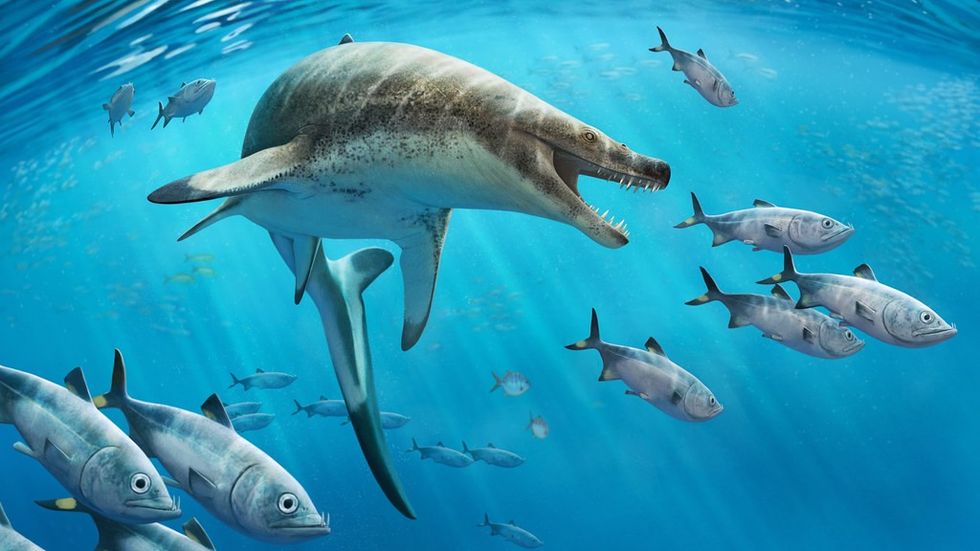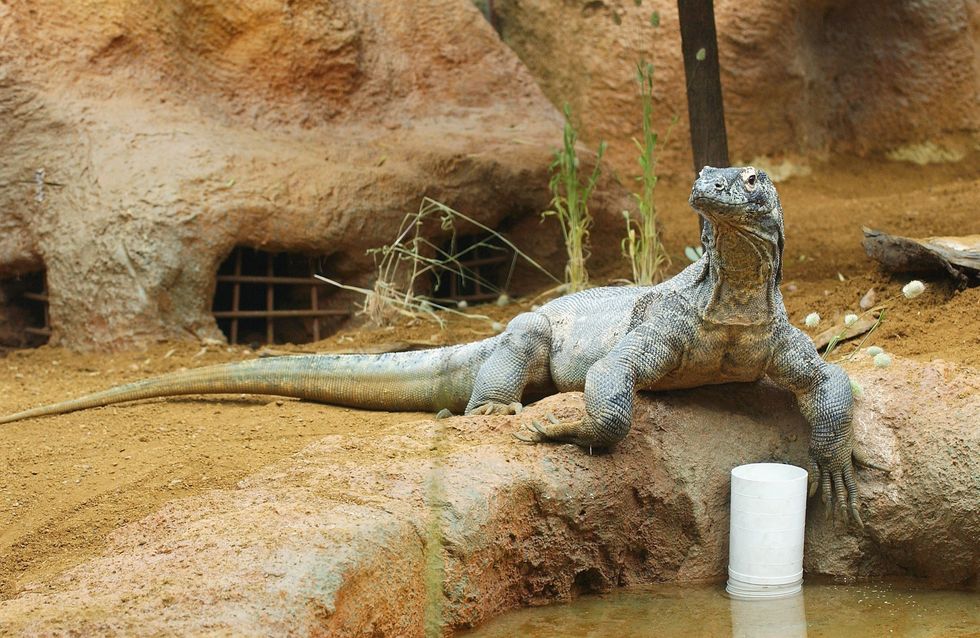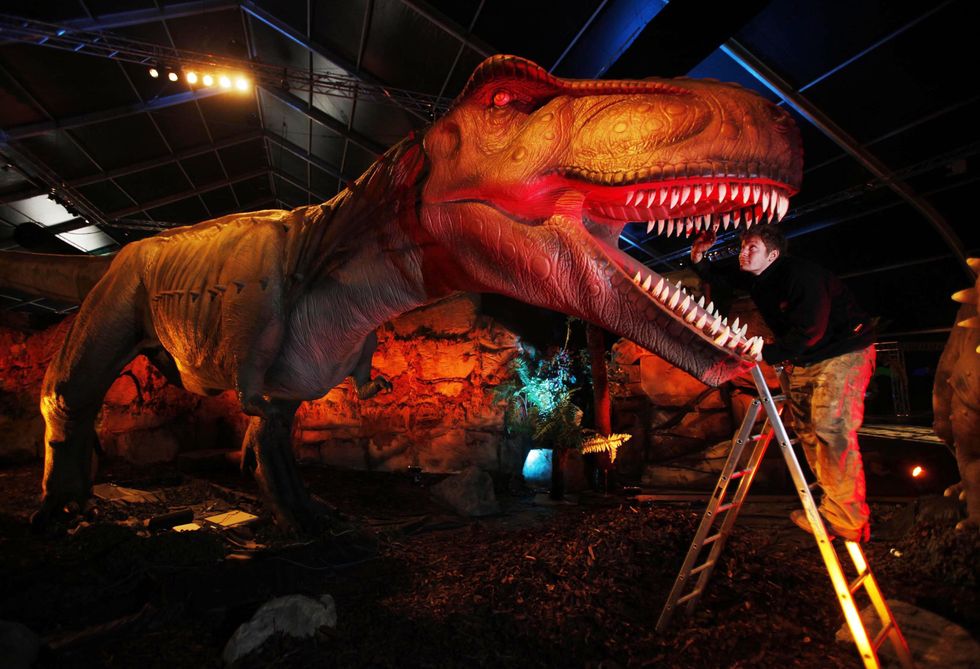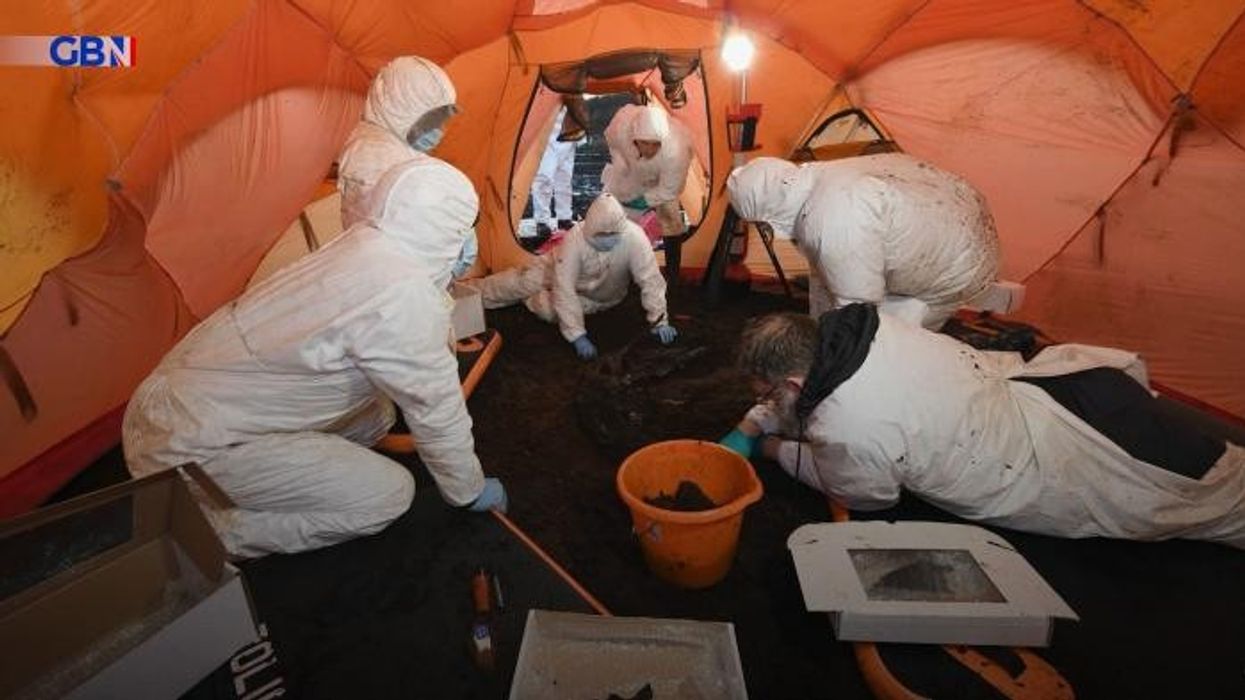Archaeologists uncover remains of 'nightmarish' sea lizard that once ruled the oceans
Khinjaria acuta belongs to a family of giant marine lizards known as mosasaurs
Don't Miss
Most Read
Trending on GB News
A “nightmarish” sea lizard with dagger-like gnashers has been uncovered by archaeologists.
Khinjaria acuta dominated the world’s oceans 66 million years ago.
It co-existed with behemoths such as Tyrannosaurus and Triceratops.
Khinjaria acuta was around eight metres long, similar to an orca, and had powerful jaws with dagger-like teeth.

Khinjaria acuta belongs to a family of giant marine lizards known as mosasaurs
Andrey Atuchin/University of Bath
Researchers have claimed the teeth ensured it displayed a “nightmarish appearance”.
Archaeologists also pointed out how its elongated skull and jaw musculature demonstrates a “terrible biting force”.
Khinjaria acuta belongs to a family of giant marine lizards known as mosasaurs.
The creatures descendants include Komodo dragons and anacondas.
LATEST DEVELOPMENTS:
The creature's descendants include Komodo dragons and anacondas
GETTY
Dr Nick Longrich, of the Department of Life Sciences and the Milner Centre for Evolution at the University of Bath, said: “What’s remarkable here is the sheer diversity of top predators.
“We have multiple species growing larger than a great white shark, and they’re top predators, but they all have different teeth, suggesting they’re hunting in different ways.
“Some mosasaurs had teeth to pierce prey, others to cut, tear, or crush.
“Now we have Khinjaria, with a short face full of huge, dagger-shaped teeth.

Khinjaria acuta would have lived alongside dinosaurs, co-existing with Tyrannosaurus and Triceratops
PA
“This is one of the most diverse marine faunas seen anywhere, at any time in history, and it existed just before the marine reptiles and the dinosaurs went extinct.”
A skull and other skeletal remains were uncovered at a phosphate mine south-east of Casablanca, Morocco.
Dr Longrich added: “Whether there’s something about marine reptiles that caused the ecosystem to be different, or the prey, or perhaps the environment, we don’t know.
“But this was an incredibly dangerous time to be a fish, a sea turtle, or even a marine reptile.”









